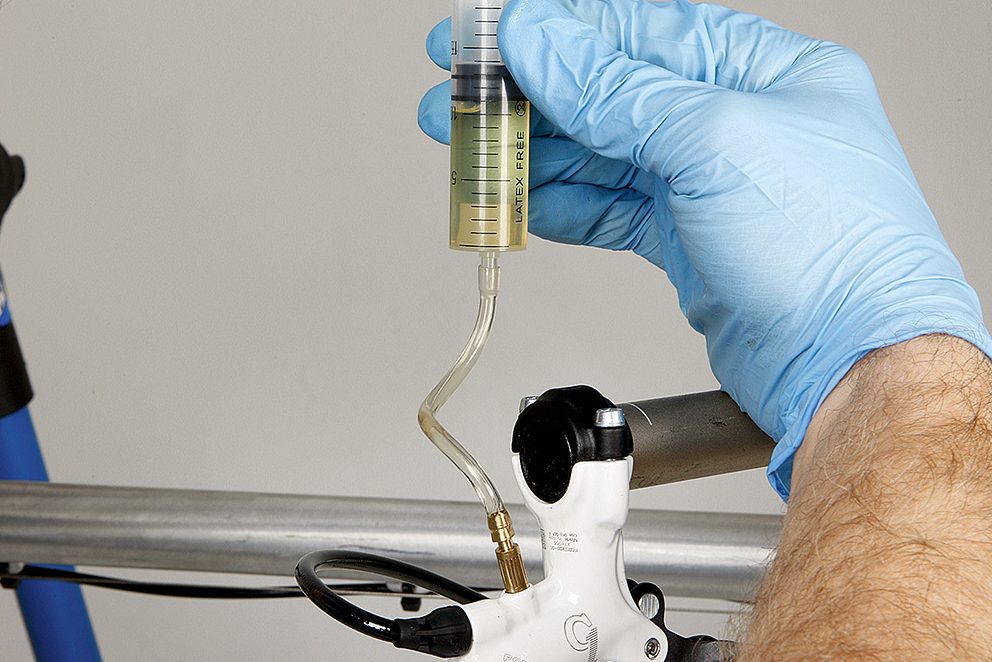Our bikes are an important tool. Whether we use them for commuting, exercise, or enjoyment, they must stand the test of time and keep us in the saddle for as long as possible.
Of course, wear-and-tear is a natural obstacle for many cyclists, but one that can be easily avoided. A little bit of bike-care can help your mountain bike maintain its functionality and continuing pedalling for years to come.
We asked Ben Mercer from Leisure Lakes Bikes for the best tips and tricks for maintaining your mountain bike. Here, we look at his recommendations to help you keep cycling for longer:

1. Tyred of poor pressure?
Ben reminds us that tyre pressure is a very important thing to consider when maintaining your mountain bike: “There is a difficult balance to find — high pressured tyres can deflect off surfaces and cause a loss of traction. Meanwhile, low pressure can cause a pinch flat, where the tyre is cut by the wheel rims. Your rims could also be damaged when riding with low pressure.”
Tyre pressure is measured in pounds per square inch (psi). Ben confirms that finding your ideal tyre pressure relies on three significant factors: “These are your weight, the volume of your tyre, and where you are riding.”
Tyres on mountain bikes should usually sit around 25psi to 35psi. But for a light-weighted cyclist, 35psi may be too hard and lack traction. Alternatively, a heavier rider may feel this pressure is too low, causing tyres to struggle with pinch flat.
The volume of your tyre will also affect your chosen tyre pressure. An inner-tube tyre will require a pressure of around 35psi, but a tubeless tyre will want the pressure of around 25psi.
Finally, understanding the route you will take your mountain bike on will help you to understand which pressure to choose. Lower pressures are ideal for fast and flowing landscapes which can absorb the shapes of the ground. Alternatively, bumpy landscapes with rocks may require a higher pressure to avoid pinch flats.
Check your manual when choosing which tyre pressure to use, as an ideal pressure will help you to maintain your bike for longer and prevent damage to both the tyres and rims.
Read more: Accu-Gage Low Pressure Gauge review

2. Good maintenance is a chain reaction
Bike chains are at risk of weather corrosion and wear. Ben says: “Ensuring that the chain is maintained will go a long way to keep your bike performing at its best. This can be achieved by regularly cleaning and lubricating the chain.”
Use an oil-based lubricant with a lint-free cloth and drive the chain through it. Clean off all excess dirt and continue to do this until the rag is dirty. Once dirty, replace the rag and repeat. At the stage when the rag is no longer getting dirty, you can reapply lubricant as needed.
You may not need to do this after every ride, depending on the route that you cycle. For those who like to take the unbeaten track through the mud, regular cleanings are encouraged to prevent rust and other damage.
A chainstay protector can also prevent damage on your bike from the chain. When changing gears, the chain can scratch the bodywork of your bike. The protector wraps around the body of your bike and prevents this. This in turns reduces the risk of rust and damage to both the bike and the chain.
Read more: Dirty Deals drivetrain special, cassettes and chains

3. Hit the brakes on poor maintenance
Ensuring you can stop your bike safely is the best way to keep your bike going. This may seem like a strange biking paradox, but brake maintenance is one of the most important things to consider on your mountain bike.
Ben reveals how to take care of your brakes: “Mud, water, and particles cause serious wear to brake pads. But reviewing their functionality is easy. Take off your wheels and review how much material is left on each pad.
“If one pad is more worn than the other, this may mean that your brakes aren’t aligned properly. If the pads are completely worn, you should check the brake discs for additional damage. If the disc has excessive wear, it should be replaced.”
Check how your breaks feel as well. Pull the brake levers. It shouldn’t feel soft; instead, there should be a definite resistant point. If it does not feel like this, your brakes could benefit from bleeding. Take your bike to a repair shop and a repair person can bleed your brakes. Doing this changes the hydraulic fluid in your brakes, removing any air bubbles or dirty fluid that has built up over time.
Read more: Best mountain bike disc brakes, budget, trail and 4-piston
Maintaining your mountain bike is essential for ensuring its longevity. Whether you need to tackle a grassy hill to get to work or you just enjoy navigating the rocky landscape of your local biking route, looking after your bike should come first. It only takes a few minutes before and after each bike ride to check that everything is in working condition. Ben reminds us that good maintenance is essential: “Not only does this increase your safety on the bike, but it means that you can make your bike last longer. This may help to reduce the cost of replacement parts or prevent you from buying a new bike altogether.”




